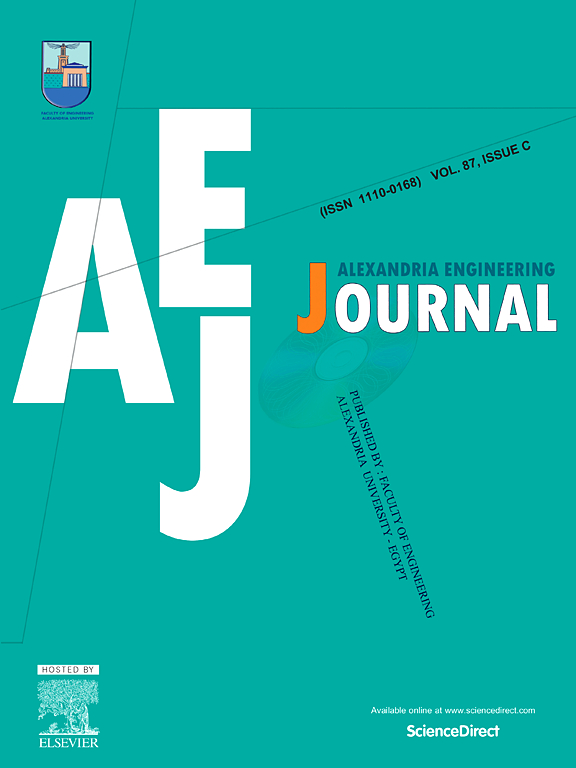环境间通信应用中的位置感知隐蔽通信协议
IF 6.8
2区 工程技术
Q1 ENGINEERING, MULTIDISCIPLINARY
引用次数: 0
摘要
近几十年来,由于环境间无线通信(空气-水)在研究、探索和战术监视方面的重要作用,它受到了军事、工业和科学界的特别关注。同时,这种通信解决方案的多样性和持续使用带来了比以往任何时候都更需要提高其安全性、准确性、带宽和传输容量。然而,由于水的吸收和散射特性,空气-水界面的反射,以及位于空气和水环境中的节点资源有限,这种通信方式面临着严峻的挑战。在这方面,虽然已经开发了许多不同的解决方案来应对这些挑战,但大多数解决方案要么具有有限的信息传输速率和范围,要么不安全,无法识别位置。另一方面,其中一些解决方案的最佳效率取决于天气条件,在恶劣天气条件下面临限制。因此,在当前的研究中,提出了一种位置感知隐蔽通信模型,在位于空气和水两种环境中的节点之间建立直接无线通信。在引入的模型中,提出了一种光学系统的概念设计,该系统的使用使参与通信的节点能够在不同操作环境下的两种NLoS和LoS模式下发现、跟踪和建立大范围内的隐蔽通信。此外,该系统有助于确定最佳进水和出水点。在该模型的解决方案中,利用一组位于GPS覆盖区域的母无人机来确定参与通信的其他节点(操作无人机、快艇和遥控车辆)的绝对位置。在这里,在空中和水上节点之间提供直接双向光通信所需的信息由无人机、快艇和rov组成的混合网络收集,并通过它传输到控制中心。仿真结果表明,与以往的方法相比,该模型不仅提高了安全性,而且降低了误码率和能耗。此外,该模型增加了传输范围和容量,尽管恶劣的天气条件,水动力学和通信节点的移动性。本文章由计算机程序翻译,如有差异,请以英文原文为准。
A location-aware covert communication protocol in inter-environmental communication applications
In recent decades, inter-environmental wireless communications (air-water) have received special attention from the military, industry, and scientific community given their important role in research, exploration, and tactical surveillance. Meanwhile, the diversity and continuous use of this communication solution has brought about a need to boost its security, accuracy, bandwidth, and transmission capacity more than ever. However, this type of communication faces a serious challenge due to the absorption and scattering characteristics of water, reflection in the air-water interface, and the limited resources of nodes located in both air and water environments. In this regard, while many various solutions have been developed to tackle these challenges, most of them either have a limited information transmission rate and range or are not safe and aware of the location. On the other hand, the optimal efficiency of some of these solutions depends on the weather conditions, facing limitations in adverse weather conditions. Therefore, in the current research, a position-aware covert communication model is presented to establish direct wireless communication between nodes located in two environments, air and water. In the introduced model, a conceptual design of an optical system is presented, the use of which enables nodes participating in the communication to discover, track, and establish covert communication in a wide range of vision, in two NLoS and LoS modes in different operating environments. In addition, this system facilitates the determination of the optimal point of water entry and exit. In the solution presented in this model, a set of mother drones located in an area with GPS coverage is utilized to determine the absolute position of other nodes participating in the communication (operational drones, speedboats, and remotely operated vehicles (ROVs). Here, the information needed to provide direct two-way optical communication between air- and water-based nodes is collected by a hybrid network consisting of a collection of drones, speedboats, and ROVs, and transmitted to the control center through it. The simulation results demonstrate that the proposed model, compared to previous methods, not only improves security but also reduces the bit error rate and energy consumption. Additionally, this model increases the transmission range and capacity despite adverse weather conditions, water dynamics, and mobility of communication nodes.
求助全文
通过发布文献求助,成功后即可免费获取论文全文。
去求助
来源期刊

alexandria engineering journal
Engineering-General Engineering
CiteScore
11.20
自引率
4.40%
发文量
1015
审稿时长
43 days
期刊介绍:
Alexandria Engineering Journal is an international journal devoted to publishing high quality papers in the field of engineering and applied science. Alexandria Engineering Journal is cited in the Engineering Information Services (EIS) and the Chemical Abstracts (CA). The papers published in Alexandria Engineering Journal are grouped into five sections, according to the following classification:
• Mechanical, Production, Marine and Textile Engineering
• Electrical Engineering, Computer Science and Nuclear Engineering
• Civil and Architecture Engineering
• Chemical Engineering and Applied Sciences
• Environmental Engineering
 求助内容:
求助内容: 应助结果提醒方式:
应助结果提醒方式:


